Name Egon Schultz | Died October 5, 1964, Mitte | |
 | ||
Born 4 January 1943 ( 1943-01-04 ) Gros Jestin Body discovered Courtyard of Strelitzer Strase 5552°32′10″N 13°23′39″E / 52.536007°N 13.394029°E / 52.536007; 13.394029 (Rostock Neuer Friedhof/ Courtyard of Strelitzer Strase 55, location of where Egon Schultz was shot) Resting place Rostock54°04′15″N 12°05′29″E / 54.07086°N 12.091269°E / 54.07086; 12.091269 (Rostock Neuer Friedhof/location of Egon Schultz’s grave) Monuments Memorial plaque on the side of the building, at Strelitzer Strasse 55 Known for Killed in the line of duty as an East German border guard while responding to the discovery of what would be known as “Tunnel 57” Residence Rostock, Germany, East Berlin | ||
Unteroffiziersschule egon schultz perleberg 2016
Egon Schultz (4 January 1943 – 5 October 1964) was a non-commissioned officer of the East German Border Troops, who, at 21, was killed in the line of duty. At the time of his death, he was responding to the discovery of what would eventually be known as “Tunnel 57”.
Contents
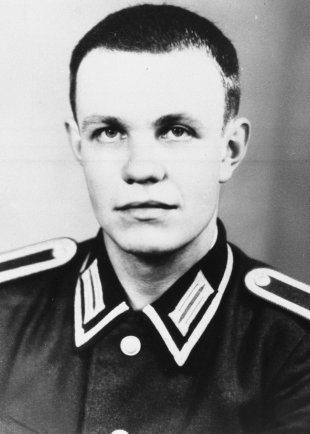
Biography
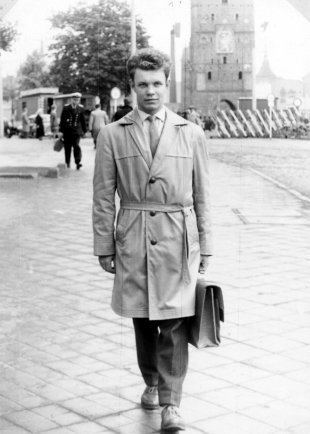
Egon Schultz was born in Groß Jestin, Kolberg-Körlin county, Pomerania (then in Germany, now Gościno, Kołobrzeg County, West Pomeranian Voivodeship, in north-western Poland). He was the younger of two sons of Alfred Schultz, a truck driver, and his wife Frieda, a waitress. He trained as a school teacher in Putbus, and began a teaching career at Rostock-Dierkow in September 1962. His teaching career would be interrupted with his conscription to the National People's Army. His older brother, Armin, was a painter, and at the time of Schultz’s conscription, the family resided at Karl-Marx-Strasse 16 in Rostock. His final visit home, just days prior to his death, was at the same time that his parents were celebrating their 25th wedding anniversary.
Death
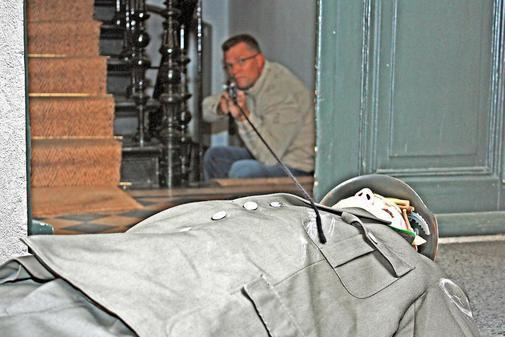
On 4 October 1964, sergeant Schultz was assigned as a reserve to the command post at Arkonaplatz in Berlin-Mitte. Shortly before midnight, a Stasi officer demanded backup support from the border guards; they were to investigate and arrest suspicious individuals at Strelitzer Strasse 55, very close to the border barriers that extended along Bernauer Strasse. But sergeant Schultz and his fellow border guards were not informed of the real purpose of the operation; the Stasi had learned from informants about an escape operation. While investigating the area near the border, the two Stasi agents met two men who were assisting an escape operation in the foyer of the building at Strelitzer Strasse 55. The escape helpers mistook the Stasi agents for fugitives. Claiming that they had to get a friend who had just been released from custody, the Stasi agents were able to leave the building, leaving the escape helpers to await their return while they organized support from the border guards.
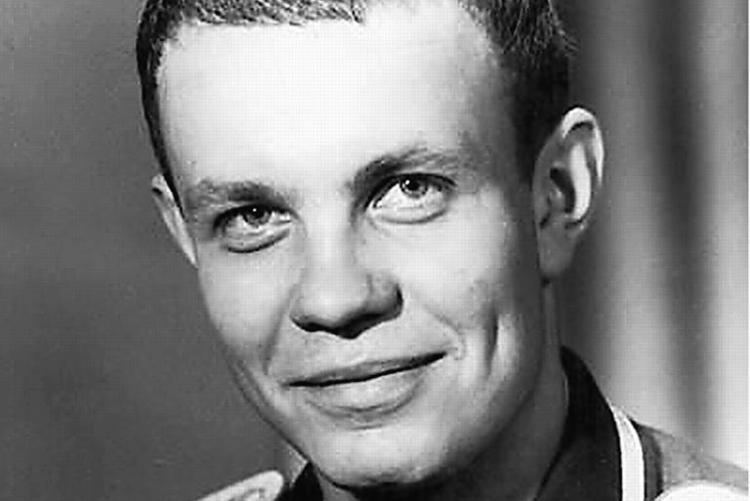
Taking several months to accomplish, a group of West Berlin students dug a 145-meter long tunnel in secrecy, which began at a closed bakery on Bernauer Strasse, and continued eleven meters underground to an outhouse located in the courtyard of the building at Strelitzer Strasse 55. This tunnel later became famous as "Tunnel 57," referring to the number of people who had succeeded in escaping through it the nights of 3 and 4 October 1964. One of the escape helpers was Reinhard Furrer, the future astronaut. He waited with Christian Zobel and two other escape helpers on the East Berlin side, ready to direct fugitives to the tunnel’s opening. At about half past midnight, the two aforementioned Stasi agents returned with the border soldiers. It was dark, and Reinhard Furrer recognized much too late that a gun was pointed in his direction. Familiar with the surroundings, he quickly receded into the courtyard and before disappearing into the tunnel, warned his friends of the danger. As Schultz and the Stasi agents entered the courtyard, there was an exchange of gunfire. Schultz was hit in the shoulder by a bullet from Zobel’s gun. He fell to the ground, and was attempting to get back up when he was hit again by one of his fellow soldiers, using an AK-47. The escape helpers were able to rescue themselves at the last minute and enter the safety of the West. But there was no way to help Schultz. He died on the way to the Krankenhaus der Volkspolizei.
Burial

The East German government gave the highest visibility to the funeral with full military honors for Egon Schultz in the Friedrich-Engels barracks in East Berlin, and again in his hometown, Rostock. When the coffin was transferred from East Berlin to Rostock, tens of thousands of workers followed government orders to line the streets and pay their last respects to Egon Schultz. He was buried in the Neuer Friedhof in Rostock. On the day of his funeral, the school in Rostock where he had been a teacher was given the honorary name “Egon Schultz Oberschule” (Egon Schultz Secondary School). Eventually, more than a hundred collectives, schools and institutions were named after Egon Schultz.
Aftermath

Investigations were opened in East and West Berlin against the escape helpers. The escape helpers admitted to West Berlin investigators that one of them did fire a gun, but there was no proof that Egon Schultz was killed from that particular gunshot. The East German government claimed that Egon Schlutz was tragically murdered by western agents.The East Berlin prosecutor’s office refused to cooperate with requests from the West Berlin investigation, and instead demanded the extradition of the “murder suspect“. It was known in 1964 that Schultz was accidentally shot by his own comrades; the fatal shot came from a Kalishnikov, and not from an escape helper. The findings of this investigation, to include disappearance of the autopsy files from the Charité Hospital, would remain highly classified until October 1990, when the 1964 East Berlin files were given to the German federal judiciary. In November 1965, the West Berlin public prosecutor closed the case against the escape helpers, after charging them only a fine, for illegal possession of a weapon.
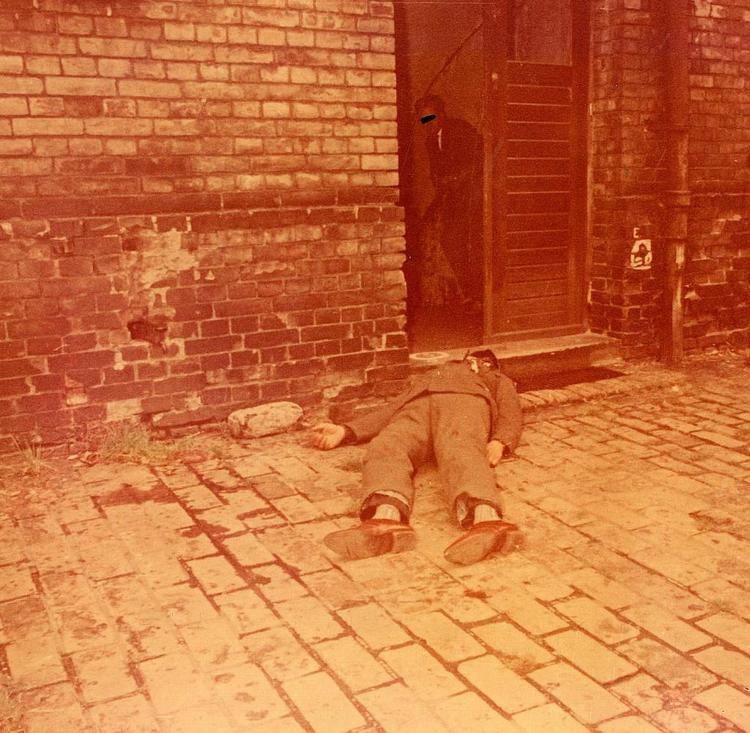
A memorial plaque was erected on 4 January 1965, on the house at Strelitzer Strasse 55, commemorating Schultz’s death and denouncing the West Berlin agents involved in the "assassination". The part of Strelitzer Strasse in East Berlin (but not the part in West Berlin) was renamed Egon-Schultz-Strasse on 13 August 1966. A children's book was written about him; almost every East German citizen knew his name from school and the media.
The Egon Schultz saga drew great attention not only in East Germany, but also in the Federal Republic of Germany, because the Stern editor in chief Henri Nannen purchased exclusive rights to the tunnel in advance, essentially co-financing the building of Tunnel 57. This was partially responsible for increased tensions between the East and West German governments.
On 1 December 1991, the aforementioned Egon-Schlutz-Strasse reverted to its original name, Strelitzer Strasse. About the same time, the Egon Schultz Oberschule in Rostock was renamed Käthe-Kollwitz-Gymnasium. Throughout the former East Germany, many schools and institutions bearing Egon Schultz’s name reverted to their original names.
By 1992, prosecutions had begun against former border guards, charging them with murder or manslaughter. A case was opened with regard to Egon Schultz for suspicion of negligent homicide, involving investigation of all the people involved in the incident, including the Stasi agents and the border troops. Neues Deutschland embarked on a major campaign asking for donations to help cover the costs of legal counsel and court fees for the border soldiers who, from the viewpoint of the fundraising initiators, were being unlawfully prosecuted. Almost 200,000 German marks were donated, managed by the “Gesellschaft für rechtliche und humanitäre Hilfe” (Society for Legal and Humanitarian Aid), an association of former Stasi, border troop and Communist Party members. The investigation concluded that Christian Zobel fired the first shot in order to prevent Reinhard Furrer and himself from being arrested. The bullet was lodged in Egon Schultz’s lung but did not kill him. The fatal shot came from the Kalashnikov of a border soldier who, on instructions from a Stasi officer, fired shots in the dark courtyard, unintentionally hitting Egon Schultz, who then died from internal bleeding. It was accepted by the court that the border soldier who had fired the deadly shot had acted in self-defense. The case was dismissed since he had been ordered to fire.
In response to the investigation against the border guards and Stasi agents, in May 1994, private individuals pressed charges against Reinhard Furrer for supposedly murdering Egon Schultz. Egon Schultz’s mother, who had supported the accusation, was represented by a renowned West Berlin law firm. Additional charges were also filed with the Berlin public prosecutor’s office. When Reinhard Furrer died in an airplane accident in September 1995 and it became known that Christian Zobel had already died, the lawyers representing Egon Schultz’s mother filed charges against the other escape helpers as murder accomplices, which were eventually dropped.
In 2004, a memorial plaque was erected, replacing the one previously mounted (and subsequently disappeared after 1989) on the house at Strelitzer Strasse 55. This was done on the initiative of both, former escape helpers and friends of Egon Schultz, on the 40th anniversary of his death.
